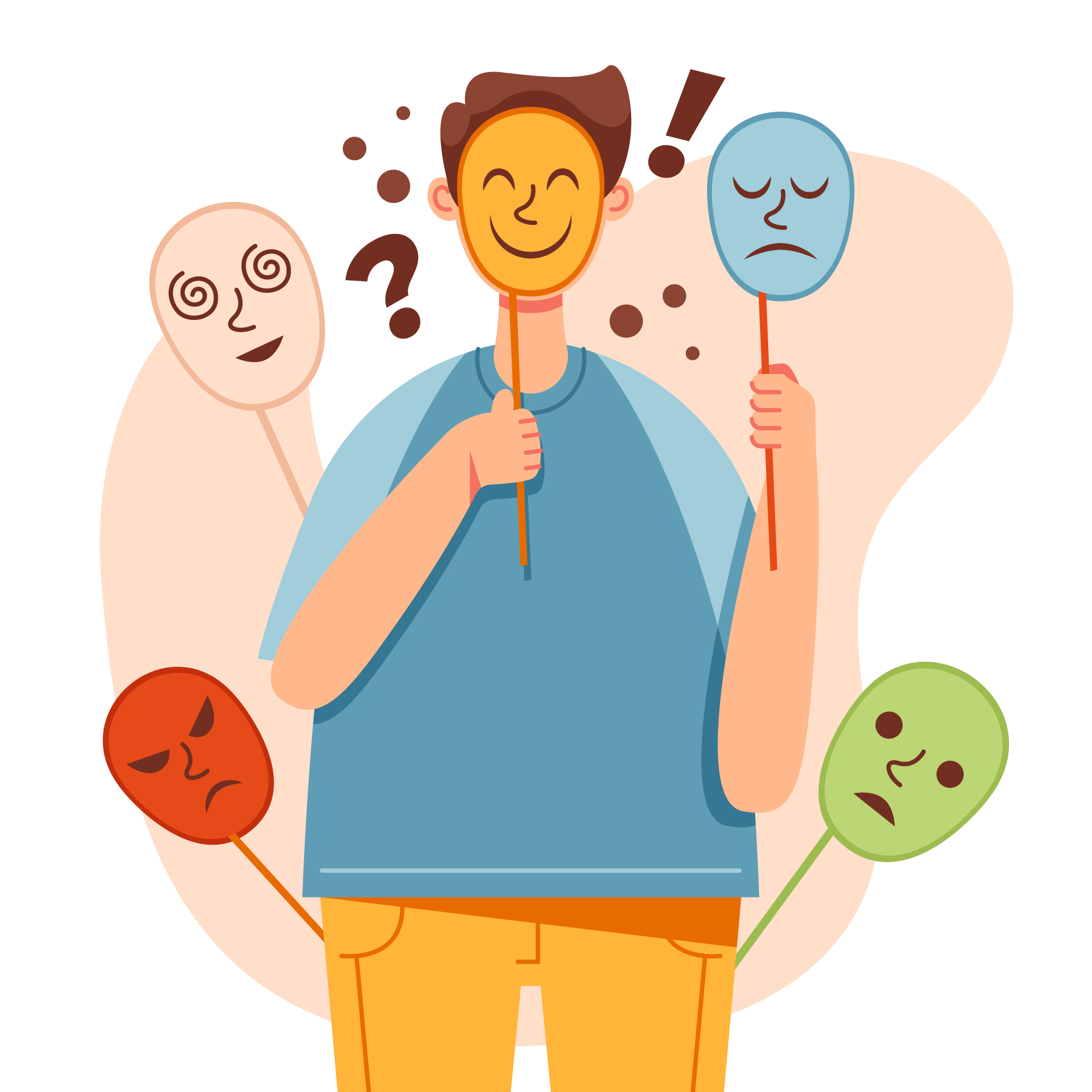What are Emotions? Understanding the Basic Nature of Our Inside World.
Introduction
What are Emotions? Are They Just Feelings or Something More?
Think back to the last time you felt an overwhelming burst of happiness—maybe it was an unexpected promotion at work, or perhaps you reunited with a long-lost friend. That undeniable wave of joy that washed over you? That’s emotion for you, my friend. It’s not just a simple feeling but a complex interaction between your mind, body, and how you interpret the world around you. Emotions color your life in vibrant shades, both blissful and challenging. They’re the hidden forces that fuel your reactions, from uproarious laughter at a comedy show to the tears that spill over during heart-wrenching goodbyes.
Why Crack the Emotional Code?
Picture this: You’re standing at a crossroads, and each path represents a different emotion. One leads to joy, another to sadness, and so on. How do you decide which path to take? Well, it’s simpler when you have a roadmap, right? Understanding your emotions provides that invaluable roadmap, guiding you through life’s twists and turns. It enables you to make informed choices, fortify relationships, and even better handle challenges that come your way. Ever found yourself overreacting and later wondered, “Why did I act like that?” Knowing your emotional triggers can help prevent such instances. Your emotions are like a language. The more fluent you are, the better you can communicate with yourself and others.
So, are you ready to decode the secret language of your emotions and gain mastery over your life? If yes, then let’s dive right in.
Where Do Emotions Come From?
Born with Them?
Some emotions seem to be ingrained in our very nature. Even babies express basic emotions like joy, anger, and fear. These are our fundamental emotional responses, evolved over thousands of years to help us respond to our environment more effectively. They are, in essence, our mind and body’s way of communicating to us, aiding us in making decisions that sustain our lives and keep us safe.
Brain and Emotions
The brain acts like an orchestra conductor, directing the music of our emotions. It processes the information it receives and decides how we should feel about it. Various regions of the brain, like the amygdala and the prefrontal cortex, play a role in emotional responses. When something significant happens, the brain sends out signals that trigger physiological changes and emotional experiences, such as feeling happy, sad, or scared.
Kinds of Emotions
Basic Feelings: Happy, Sad, Angry
These are the universal emotional building blocks that everyone, regardless of culture or language, can identify. They are immediate and often result from a specific event. When you’re given a gift, you feel happy. When you experience a loss, you feel sad. When something unfair happens, you may feel angry. These are simple, straightforward emotional responses that serve as the common ground for human emotional expression.
More Complex Feelings: Guilt, Jealousy
Unlike basic emotions, complex emotions are often a blend of more than one basic emotion and may not have a single clear source. Guilt could involve elements of sadness and fear. Jealousy might blend elements of anger and insecurity. Understanding these complex feelings often requires more introspection, as they can be tied to deeper thoughts, beliefs, or past experiences.
Emotions in Different Cultures
While basic emotions are universal, the way we express and interpret them can vary widely from culture to culture. In some cultures, showing emotion is considered a strength, while in others, it may be viewed as a weakness. The ‘same’ emotion may also have different triggers depending on cultural norms and values. For example, what might cause joy in one culture could lead to indifference in another.
Understanding emotions isn’t just a personal journey; it’s also a window into the diversity of human experience.
Physical Changes
Body Reactions: What Happens When We’re Scared?
When we encounter something scary, our bodies go into a “fight or flight” mode. Our heart rate increases to pump more blood to muscles, our breathing becomes fast, and we may even start to sweat. These changes prepare us to either run away or confront what’s frightening us. This is our body’s way of equipping us to deal with potential threats. It’s like an internal alarm system that readies us to face or escape danger.
Faces Show Feelings
The human face is like an open book that displays our inner emotional state. A smile usually signals happiness, while a frown typically indicates sadness. Our facial expressions serve as universal signs that communicate our feelings to others, even when words fail us. This is why even without speaking the same language, people can often understand each other’s emotions just by looking at their faces.
Ways People Understand Emotions
How We Think Affects How We Feel
Our emotions aren’t just triggered by events; they’re also influenced by how we think about those events. Two people can experience the same situation but feel very different emotions because of their thoughts about it. If you think positively, you are likely to feel happy or hopeful, but if you view the situation negatively, you may feel sad or frustrated.
Different Ideas About Emotions
There’s ongoing debate about whether our emotions trigger our bodily reactions or if it’s the other way around. Some people believe that you first feel an emotion, and then your body reacts. Others think that physical sensations come first, and then you label these as a particular emotion. The truth likely lies somewhere in between; our thoughts, emotions, and physical reactions all interact in complex ways to create our emotional experiences.
Mind and Body Together
Our Thoughts and Our Body Work Together to Create Emotions
Our emotional state is the product of a complex interplay between our mind and body. When faced with a situation, our thoughts interpret what’s happening while our body reacts physically. These two aspects work in tandem to help us understand our emotions and how to respond to them. It’s a fascinating, intricate dance between the mind and the body that brings our emotional world to life.
Being Smart About Emotions
Knowing How You Feel
Being aware of your emotions is the first step to making smarter decisions and building stronger relationships. If you can identify what you’re feeling, you’re better equipped to take steps that will benefit you and those around you. It’s like being the captain of your ship; you can’t steer it in the right direction unless you know the conditions you’re sailing in.
Controlling Emotions
Learning to control your emotions doesn’t mean suppressing them; it means understanding them well enough to manage your reactions. Knowing how to calm yourself when you’re angry or anxious gives you the power to act thoughtfully instead of impulsively. It’s an essential skill that contributes to your overall well-being and helps in maintaining balanced relationships.
Understanding Other People
Empathy is the ability to understand and share the feelings of others. It’s an essential quality for building strong and meaningful relationships. By understanding other people’s emotions, you can become a more compassionate friend, partner, or family member. This emotional intelligence not only enriches your interpersonal interactions but also enhances the quality of your life.
Parts of the Brain Involved
Brain Areas That Control Emotions
The brain is the control centre for our emotions, and specific areas play key roles in how we feel. The amygdala, for example, helps us respond to danger and assess threats. The prefrontal cortex is involved in controlling emotional reactions. Understanding these brain regions can give us insight into why we feel the way we do, and how to manage these feelings better.
The Brain’s Rule Book for Emotions
Our brain has built-in mechanisms that dictate how and when we should experience emotions. These ‘rules’ are a combination of our genetic makeup and life experiences. They help determine our emotional responses to different situations. For example, fear usually triggers a “fight or flight” response, while happiness may lead to increased social engagement. Knowing these ‘rules’ can help us better understand our emotional lives.
Emotions and Feeling Good or Bad
Hiding Emotions
Suppressing or hiding emotions can have a negative impact on our mental health. It’s like bottling up pressure within ourselves, which can eventually lead to stress or even emotional breakdowns. Ignoring what we feel doesn’t make the emotions go away; it just stores them up for later, often making things worse.
Talking About Feelings
Discussing our emotions can be therapeutic. Not only does it help us understand what we’re going through, but it also allows us to gain different perspectives on our problems. Sharing emotions can lighten our emotional load and is scientifically proven to improve our mental health. When we talk about how we feel, we open the door to solutions and pave the way for happier, healthier lives.
Emotions Today
Computers and Emotions
Technological advances have reached a point where some computers can recognize and interpret human emotions. Through facial recognition and voice pattern analysis, these computers can gauge a person’s mood and even respond accordingly. While this technology is still in its early stages, it shows promise for future applications in mental health, customer service, and more.
Robots and Feelings
The question of whether robots will ever experience emotions is a topic of ongoing debate and research. While it’s unlikely that robots will feel emotions in the way humans do, advances in artificial intelligence may allow them to simulate emotional understanding. This is a significant ethical and philosophical issue, as it touches on what makes us uniquely human and how far technology should go in mimicking emotional experiences.
Ending Thoughts
The Big Puzzle of Emotions
Let’s be honest—emotions are like a vast, intricate puzzle that humanity has been trying to solve for ages. Just when we think we’ve found a piece that fits, another emotion pops up, and we’re back to square one. It’s complex, but it’s also what makes life rich and meaningful. And remember, it’s okay not to have all the pieces together yet. The beauty lies in the journey of figuring it out, piece by piece, emotion by emotion.
Keep Learning About Emotions
Here’s the deal: The more we dive into the ocean of emotions, the better equipped we are to surf the waves of life. Knowledge is power, and in this case, it’s the power to lead happier, healthier, and more fulfilling lives. So keep asking questions, keep seeking answers, and most importantly, keep feeling. Because the better we understand our emotional selves, the better we understand the world around us. And who knows? Maybe the next piece of the puzzle is just one emotion away.
So, what do you say? Ready to embark on this emotional journey of a lifetime? Your feelings are waiting.

